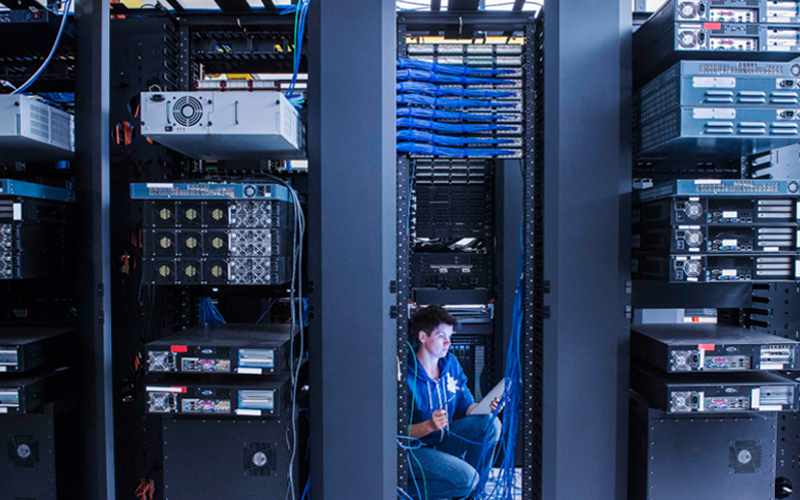In an era of relentless technological advancement, the imperative for global connectivity transcends traditional cable technologies. Using state-of-the-art techniques, reshaping the foundation of international communication, and opening doors beyond what traditional cable infrastructures can offer remains critical.
We are at the beginning of a revolutionary period in which the path of connectedness is about to take a sharp turn by laying the groundwork for a discussion about advancing connectivity outside the boundaries of traditional cable technology and negotiating the complex terrain of future opportunities.
What is Global Connectivity
The complex web of exchanges and relationships that connects people, companies, and countries worldwide is referred to as global connectivity. Today, the internet, telecommunications, and transportation networks are the main examples of cutting-edge technology that enable this interconnectedness. The domains of economics, diplomacy, and culture are among the many areas where this interconnection has significant consequences working alongside wireline service providers.
Limitations and Challenges of Cable Technology
Although cable technology is essential to modern connectivity, it has drawbacks such as capacity restrictions and signal deterioration. In an ever-changing digital context, overcoming these obstacles is essential to maintaining smooth communication.
Limitations of Physical Infrastructure
Cable technology struggles with the complexities of metropolitan environments, as installing physical infrastructure presents challenges that could result in connectivity gaps. Moreover, the current infrastructure presents scalability issues that hinder the smooth growth of cable networks in densely populated regions.
Difficulties with Installation and Maintenance
High deployment costs result from the complex installation procedures related to cable technology. Furthermore, the expectations for continuous maintenance are complicated and call for qualified staff to address problems quickly. Maintaining the long-term sustainability of cable infrastructure necessitates striking a balance between accuracy and economy.
Susceptibility to Environmental Factors
Because they rely on cables, communications networks are vulnerable to natural disasters like storms and floods. Severe weather conditions have the potential to harm cables, which could lead to service interruptions and need large sums of money for preventative measures and quick repair procedures.
Geographical Limitations
Comprehensive connection attempts are hampered by the geographical constraints of cable networks. Rural and mountainous regions, for example, are remote and difficult terrains that are frequently underutilised. Innovative approaches are needed to overcome these constraints to reach a variety of environments and close connectivity gaps.
Cybersecurity Threats
Cable networks are vulnerable to a wide range of ever-changing cybersecurity threats. Strong security measures are required to prevent unwanted access because of the vulnerability to hacking and data breaches.
In summary, managing signal loss and increasing bandwidth capacity become critical when negotiating the intricacies of cable technology. A stronger and more effective communication infrastructure will be possible if these obstacles are removed.
Emerging Technologies
New technologies like satellite solutions and wireless advances are redefining communication as our digital world develops.
Wireless innovations
The environment of connectivity is constantly changing as wireless technologies advance. 5G mobile networks offer quicker data transfer and lower latency than ever before because of their unmatched speed and dependability. With regard to cable connectivity, wireless firms are setting the standard and changing our expectations for data access and consumption.
Satellite-Based Solutions
Satellite technology is still essential for international communication, navigation, and observation. These technologies are essential for linking the globe and enabling a wide range of applications, from Earth observation satellites that supply real-time data to different industries to sophisticated communication satellites that expand coverage to isolated locations. Furthermore, satellite technologies play a major role in cable connectivity.
In summary, a paradigm shift in the way we interact and communicate has been brought about by the dynamic synergy between wireless advancements and satellite solutions.
Advantages of Global Connectivity
Global connectivity has completely changed how we live and work. Its benefits range from easy communication to shared knowledge and are crucial in forming our globally interconnected world.
Increased Mobility and Flexibility
Increased global connectivity makes it easier for people to communicate easily and stay in touch across borders. By providing dependable and portable communication solutions and enhancing the mobility and flexibility of cellular telecom services, wireline service providers, with their vast networks, play a part in this.
Less Dependency on Physical Infrastructure
Telecom firms' wireline services are essential in lowering reliance on physical infrastructure. A more streamlined and less infrastructure-intensive communication ecosystem is created when landline networks facilitate cellular connectivity, resulting in a more efficient data distribution.
Quicker Deployment and Implementation
Telephone service providers facilitate communication networks' deployment and implementation more quickly. To fulfill the growing need for high-speed communication in today's globalised world, their reliable wired infrastructure supports their wireline telecom services. This ensures a thorough and quick rollout of connectivity solutions with wireline telecom.
Greater Bandwidth and Scalability
Wireline telecom combined with wireline services leads to greater bandwidth and scalability. In order to ensure a dependable and high-capacity communication infrastructure that can adjust to changing global connection needs, wired and wireless networks work together to handle expanding data demands efficiently.
Enhanced Resilience to Natural Disasters
The ability to connect globally through wireline services and telecom makes one more resilient to natural disasters. The varied nature of communication networks makes it more likely that critical connectivity will be maintained in the event of a disruption, facilitating effective disaster response and recovery operations around the globe.
Global connectedness, in summary, promotes cooperation, economic expansion, and cross-cultural interaction. Accepting its advantages advances humanity, transforming the globe into a tightly-knit, interconnected society.
How can Infosys BPM help?
Businesses can greatly improve their communication efficiency by utilising wireline services telecom with Infosys BPM. Infosys BPM provides dependable and secure messaging solutions that provide real-time communication, enhancing team member cooperation. Its wireline services facilitate smooth communication, enabling companies to remain flexible and react quickly. Infosys BPM enables simplified communication channels crucial for contemporary corporate operations by optimising wireline telecom services, whether for internal coordination or client contacts.







